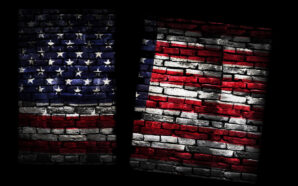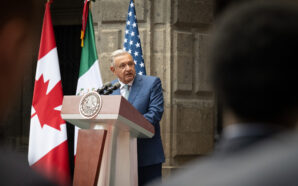Mexico City – At a time when Santa Claus is everywhere, it is hard to imagine that Mexico came close to replacing the long-popular symbol of Christmas with the pre-Columbian god Quetzalcoatl in 1930.
A Christmas without Santa sounds like something straight out of a science fiction story, but on Dec. 23, 1930, Mexico City’s National Stadium, which hosted large political rallies, was the scene of a strange event free of the jolly old man.
On that date, President Pascual Ortiz organized a toy giveaway for children presided over by Quetzalcoatl before a pre-Columbian pyramid.
“It was a nationalist project by the education secretary, Carlos Trejo, to replace Santa Claus and put in something more Mexican,” historian Alfredo Avila, a professor and researcher at the National Autonomous University of Mexico (UNAM), told EFE.
The story in the daily El Universal about the event describes lighted Christmas trees and a procession by priests, battalions and dancers in honor of Quetzalcoatl, who is portrayed as a plumed serpent.
First lady Josefina Ortiz helped hand out toys and goodies to the poor children invited to the event, which drew about 15,000 people, including foreign diplomats.
The early 20th century was marked by the rise of extreme nationalism in many parts of the world and Mexico, where the revolution that ousted Francophile dictator Porfirio Diaz had just triumphed, was not an exception.
“The Mexican governments of the 1930s used nationalist rhetoric with strong pre-Columbian references to confront what they viewed as a possible US cultural invasion,” the historian said.
During that time, US brands made a big push into the Mexican consumer market, with the Coca-Cola Company popularizing Santa Claus.
Replacing the jolly white-bearded Santa with a plumed serpent was one way for Mexican officials to “bolster the country’s pride by looking at its roots,” Avila said.
“Quetzalcoatl was a peaceful pre-Columbian deity, of the cult of civilization and a bringer of good fortune, unlike the gods of war, such as Huitzilopochtli, who would not have been a good fit as substitutes for Santa Claus, the Three Kings or Baby Jesus,” the UNAM historian said.
Praising indigenous symbols comes across as paradoxical in a country that created great myths about the pre-Columbian civilizations at the same time that “for the government, it was not important to pay attention to the indigenous communities,” whose members accounted for about 20 percent of the population, Avila said.
The new Christmas symbol, however, was not widely accepted and El Universal published drawings and ads making fun of the project, as well as letters from readers who were shocked and wondered whether they were supposed to add a plumed serpent to their Nativity Scenes.
Critics questioned whether it made sense to try to redefine Christmas with an indigenous emphasis in a country that was home to millions of devout Catholics.
Avila noted, though, that the Mexican state had just won the 1926-1929 Cristero War, a conflict that pitted the lay revolutionary government against militias backed by the Catholic Church in a battle for control over education in Mexico.
President Pascual Ortiz’s administration, for its part, had little sympathy for the Catholic Church, but it tried not to push the faithful too far and held the event on Dec. 23 instead of Dec. 25.
No other alternative Christmas celebrations were ever held and nearly 90 years later, Quetzalcoatl remains relegated to museums while children await the arrival of Santa Claus with his sack full of gifts.






